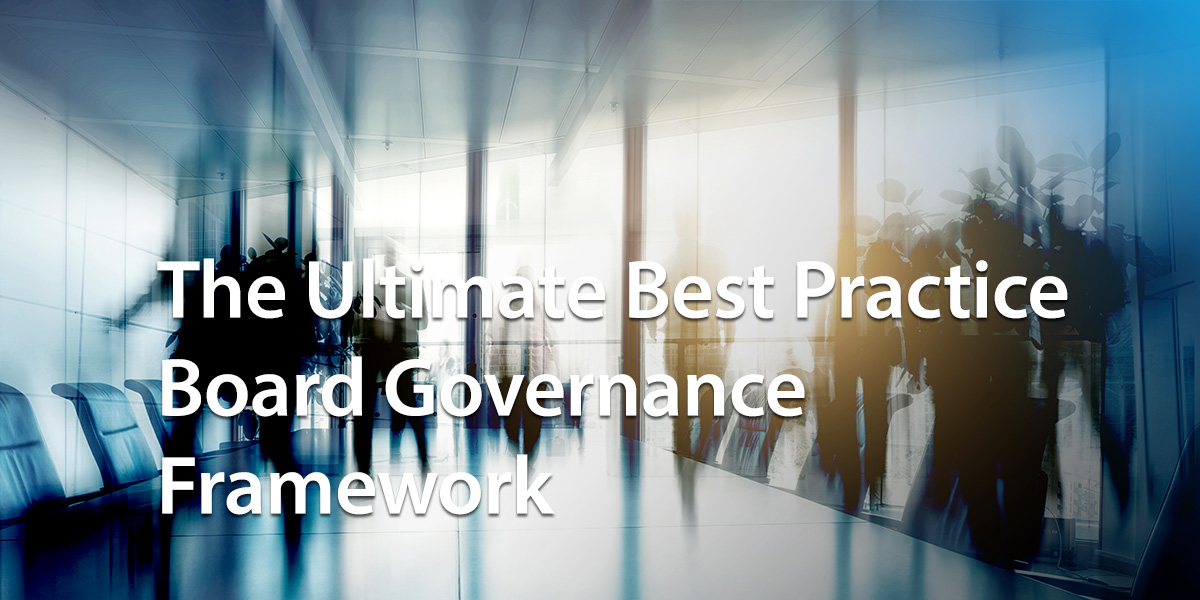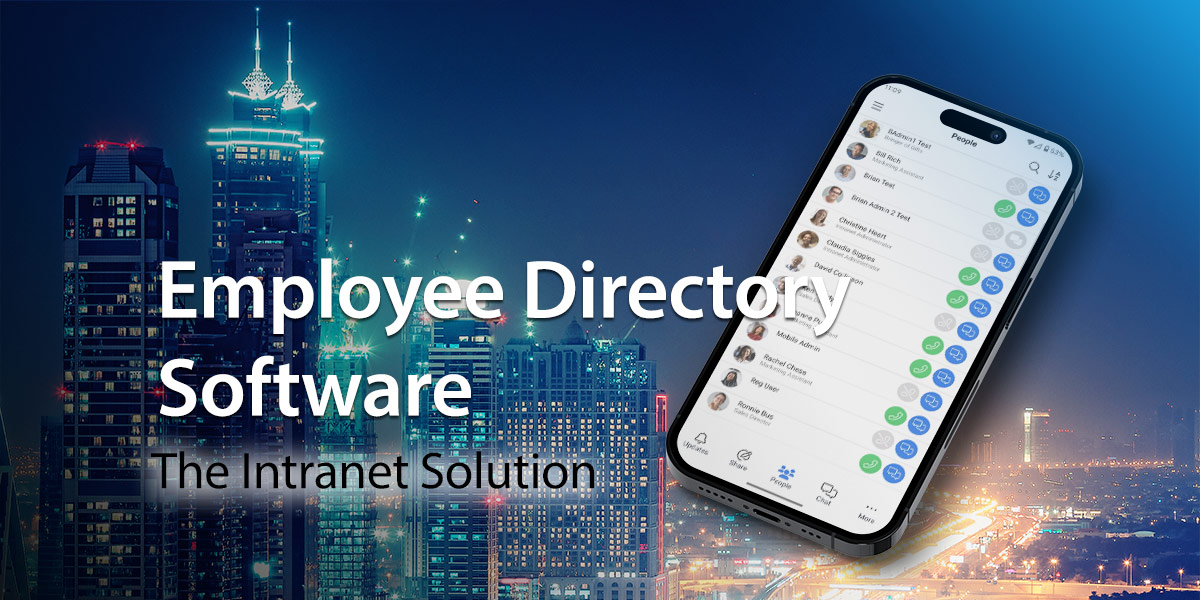Let’s face it, board governance isn’t the most exciting topic. However, it’s vital to the smooth running of every business, no matter the size or scope. A robust governance structure helps organizations meet business goals. These include risk management, better decision-making, and achieving long-term strategies. In short, corporate governance builds compliant, ethical, successful businesses. And it could give you that all-important competitive advantage with investors and consumers.
This week’s post looks in detail at governance frameworks focusing on a board structure. We look at the different types of boards and explore the elements of a best-practice governance framework.
Let’s kick things off with a definition.
What Is Governance In Simple Terms?
Governance structures set the rules, practices, and procedures that direct and control the activities of an organization.
A governance operating model is all about the big picture. Generally speaking, board directors shouldn’t get bogged down at the day-to-day operational level. Instead, they focus on overseeing strategic planning and internal controls and building a culture of continuous improvement.
The board advises senior executives in making strategic decisions and planning for future growth.
Many think a governance structure is only relevant to public companies and big corporations. However, small businesses, not-for-profit and public sector organizations also benefit from the improved accountability and oversight of key business activities.
What Is A Board Governance Model?
A board of directors is the most popular governance operating model. Each organization’s approach will be different. However, corporate boards help management control the following key components:
- Business growth and developing a clear vision of the future
- Creating strategies for managing or reducing risk
- Overseeing regulatory compliance
- Monitoring organizational culture
- Improving trust and reputation with stakeholders, investors, and customers
- Making executive management appointments
Corporate boards vary between organizations, especially for-profit and not-for-profits. However, here are the most common types of board governance:
Governing Board
This type of corporate board follows the interests of stakeholders and offers direction to senior management.
Executive Board
With this option, board members may get involved in some day-to-day operations and they also make key decisions.
Working Board
Most often seen in SMEs, board membership is made up of board directors and management.
Advisory Board
Board members are comprised of external experts who provide advice to directors and management.
Who Are The Members Of The Governance Board?
Board members can come from a variety of backgrounds. In fact, the most successful boards include a diverse range of experience, wisdom, and expertise.
Some may be retired professionals in your industry. Others will be successful executives in related sectors. And some board members will be academics, lawyers, or accountants.
Board meetings shouldn’t be about rubber-stamping senior management’s decisions. You want the board to drive strategy, broaden your horizons and ensure the organization is held accountable to shareholders and stakeholders.
Here are some key principles to help guide you when appointing a board of directors.
- Look for a range of different perspectives. Often someone from outside your industry can offer fresh insights that become game-changers. Diversity is critical for effective governance models. So recruit board members with a breadth of expertise and from a variety of backgrounds.
- Avoid yes people. Ideally, you want members with the courage and confidence to challenge your assumptions. Board decisions are often difficult and can involve forging a new path. Make sure you have experienced and committed directors who can support and guide your organization.
- Experience counts. Now’s not the time to select a rookie who may be ill-equipped for the challenges – even more so if your business is a startup or small enterprise. Governance and accountability are huge responsibilities. You need experience and expertise behind you.
What Is Board Governance vs Operational?
When it comes to corporate governance, board processes are usually focused on high-level strategy, risk management, and compliance. They don’t get involved in everyday operational issues. That’s firmly the responsibility of management. But there is an exception.
A working board is a standard governance structure in organizations with few staff and tight budgets. You see them most frequently in startups or not-for-profits. Alongside strategic oversight, working boards also have responsibility for operations.
In working boards, the directors set the governance framework to guide the CEO and management in supervising daily operations. The board provides support on various aspects, including company culture, internal processes, and practices. In short, working boards set the operational framework, and management does the managing.
This type of organizational structure requires careful thought and construction. Clear lines of responsibility are necessary if directors and management are to perform their responsibilities effectively.
What Is Effective Board Governance?
Today’s organizations are held to very high standards by investors, stakeholders, and customers alike. Businesses have greater accountability for their actions and behavior than ever. And effective board governance ensures that companies are operating with integrity and transparency.
A strong governance framework organizes risk management, compliance, and financial procedures to keep boards updated. Clear rules and processes give the governance structure clout and drive strategic decision-making.
The Corporate Governance Institute has identified the following main principles to guide any governance structure. Use these as a starting point, and you will be on the way to achieving a solid governance structure.
1. Responsibility
Ultimately, boards are answerable to shareholders. Their role is to steer the organization away from risk and towards success while ensuring it operates within the law.
2. Accountability
Boards are accountable for the decisions they make. And so, all decisions should be data-driven and carefully considered. That way, if internal or external stakeholders challenge decision-making, there’s a clear paper trail.
3. Awareness
The board should have the necessary insight and awareness of the landscape within which the organization operates. This can only come from years of experience and accumulated expertise. It’s a delicate balancing act deciding between risks to avoid and opportunities worth taking.
4. Impartiality
It’s crucial that the board approaches every decision-making responsibility with an impartial, objective mindset. Conflicts of interest must be declared. And personal interests and beliefs should be left outside the boardroom.
5. Transparency
Paperwork is critical to good governance. Boards are responsible for documenting and reporting on their decisions and not just concerning financial compliance. All discussions, including any disagreements over strategy or risks, should be recorded for full transparency.
Companies know they have good practice corporate governance in place when they can tick the following checklist:
- Boards make considered data-driven and evidence-based decisions
- Organizations’ gaps and weaknesses are identified, and processes are put in place to address them
- Management is supported and enabled to deliver effective leadership
- Boards provide robust oversight and accountability for financial and compliance responsibilities and risk management
It’s best practice to review your governance framework from time to time. You want to ensure it’s still fit for purpose and meets rising shareholder and investor expectations.
For example, climate change has shone a spotlight on the environmental credentials of organizations worldwide. With increasing expectations come increased responsibilities. Companies need to ensure board procedures consider the current and future impact of business activities on global issues of concern like climate change.
How Do You Develop A Governance Framework?
One of the most critical tasks for any board is regulatory compliance. So, the starting point for developing a governance framework has to be the legal landscape within which the business operates. It could be federal or local regulations. Whatever the case, a company has to work within those legal boundaries.
Here are other aspects companies need to establish when developing governance structures.
- Identify the senior executives in the business and their information requirements
- Set out the organization’s reporting responsibilities and how information needs to flow around the company
- Establish how risk is managed within the business
- Make clear the relationships between stakeholders, shareholders, directors, and management
Once you have identified the overall framework for the board’s work, it’s time to get into the detail. The following tips will help you get this crucial step right.
- Work up clearly defined roles and responsibilities for board directors and management
- Ensure these responsibilities are carried out by the right people and at the right time
- Develop data governance and information security policies so the board makes data-driven, evidence-based decisions, and company data is kept safe and secure
- Maintain an up-to-date conflict of interest register
- Develop processes for managing and resolving conflict
- Focus on transparency by documenting board decisions and discussions in formal minutes
Our final tip is perhaps the most important. Regularly review your governance framework to ensure it remains fit for purpose.
The Role Of Technology In Governance Structures
Technology has a massive role to play in supporting a governance framework. Nowadays, many board directors are working remotely. Digitized board processes and governance systems are now mission-critical.
And the company intranet has much to offer. The intranet acts as a central hub for all the board’s information requirements, including the following:
- Automated board meeting schedules
- Easily searchable meeting minutes and agendas
- Real-time document collaboration with embedded Google Workspace or Microsoft 365 apps
- Assignment and tracking of board tasks
- Automated processes and procedures to monitor compliance requirements
- Easy sharing of information to support data-based decision-making
- Private project spaces where members of the board can brainstorm, share insights and information
- Instant messaging for swift resolution of queries between the board directors and management
The bottom line is intranets help boards govern more efficiently and effectively in today’s fast-paced digital workspaces. See the 12 best board governance software solutions.
Board Governance: Quick Recap
A governance framework sets out the rules and processes to direct and manage an organization. The board model is the most popular form of governance.
With the exception of a working board, the board’s primary focus is strategic. They ensure that companies have a clear mission and a long-term vision. Boards represent shareholders and hold management accountable.
The board has oversight of financial performance and compliance. They also provide expertise and advice on managing risk. And in many organizations, boards are responsible for hiring and firing senior executives.
The five guiding principles for any governance framework are responsibility, accountability, awareness, impartiality, and transparency.
Board directors can come from a wide range of backgrounds. The more diverse, the better.
Technology plays a vital role in supporting boards and management. Best practice governance incorporates digitization for the faster, evidence-based, collaborative decision-making every business needs.
Future-proofing your governance structure with our best-practice tips helps your organization becpme more transparent and accountable. And it puts you ahead of the competition.
About MyHub
MyHub is a leading provider of cloud-hosted intranet solutions. Our platforms are used by businesses worldwide to support effective governance. The in-built communication, collaboration, and information-sharing tools are must-haves for any best practice board. Find out more with a free demo or 14-day trial. Sign up today.










